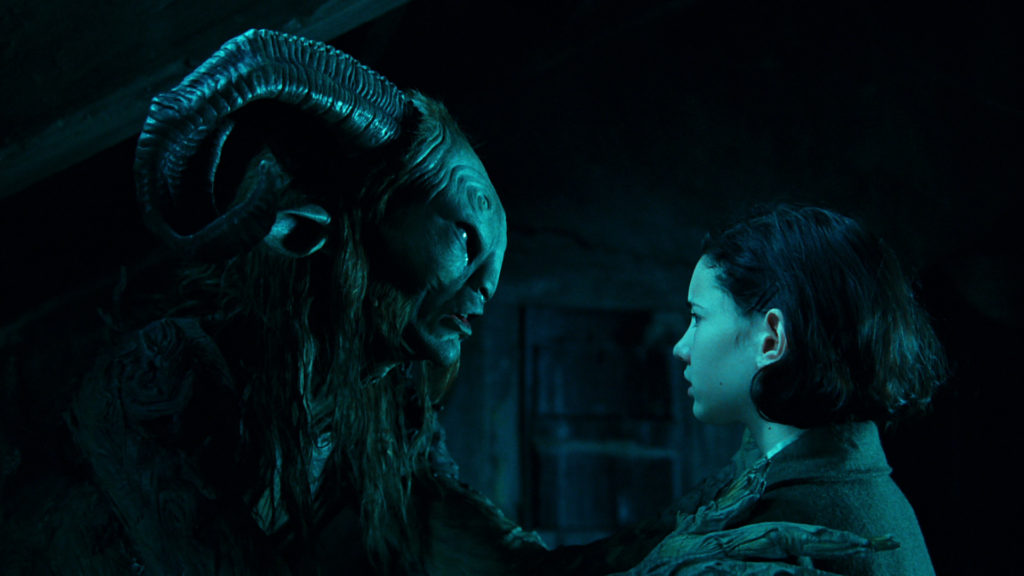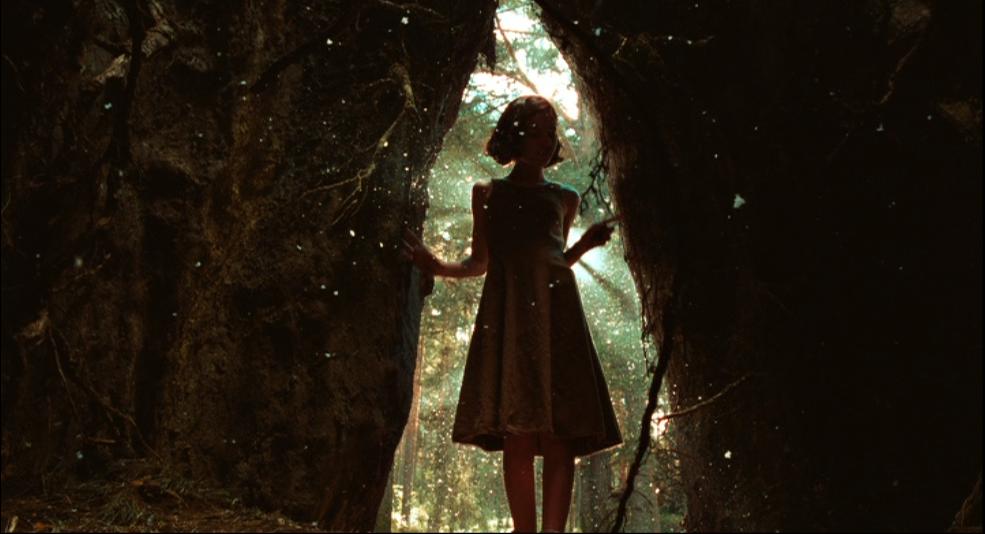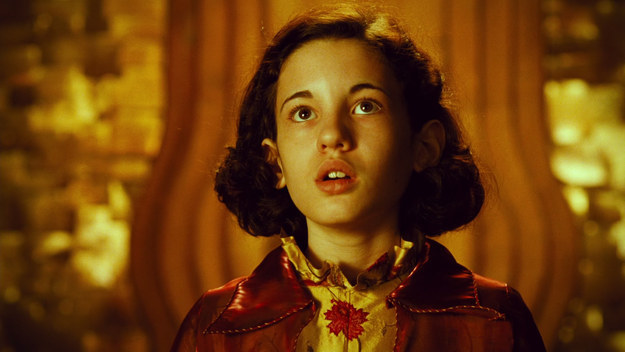
There are some movies which bring up some superbly vivid imagery on the screen, and although being gruesome at times, draw you in completely. Pan’s Labyrinth (2006) or El laberinto del fauno is one such film. Replete with fantastical and surreal elements, the film might seem like a juvenile fairy tale on the surface, but it is a lot deeper than that. Where Pan’s Labyrinth succeeds is in its seamless juxtaposition of two incongruous themes, one set in reality, and the other in bold and imaginative fiction. The former placed in the aftermath of the Spanish Civil War can be construed as the real world, that of the adults which is unpleasant and bleak to live in. The latter, on the other hand, is set in the fictitious world of children’s imagination being full of strange, scary, and mysterious happenings but nevertheless exciting. This strange collaboration of history and fantasy is what lends Pan’s Labyrinth its charm.
When young and precocious Ofelia travels with her pregnant mother Carmen to go and stay with her step-father Capt. Vidal, her life becomes miserable due to her desolate surroundings and Vidal’s rudeness. The latter is a merciless and sadistic officer whose job is to eliminate the guerrilla rebels hiding in the hills who revolt against the current fascist dictatorship. To escape the dreariness, Ofelia enters her own imaginary world where she meets a sinister faun in a dark labyrinth who tells her that she is a princess from the underworld. She is told that she must complete three tasks before the next full moon to reclaim her lost position. During the course of these tasks, which are as dangerous as they are eerie, Ofelia undergoes many perils and also befriends Vidal’s servant Mercedes who has secrets of her own to hide. In the unforgettable climax scene, Ofelia, after having lost her mother to Vidal’s cruelty, saves her newborn brother while bravely sacrificing herself, and thus returning to her lost realm of peace.
 Cinematography-wise, Pan’s Labyrinth is unique to behold. Nightmarish creatures such as the giant toad, the pale man, and of course the insidious faun himself are impossible to forget. In fact, cinematographer Guillermo Navarro won the Oscar in 2007 for his work on this film. Director Guillermo del Toro interestingly conjures up images of classic fairy tales and twists them around, giving a horror-like feel throughout the film. By artfully showing the real and the imaginary worlds, he actually parallels Ofelia’s dreadful reality with her scary fantasy. When switching between the two worlds, del Toro segues from one scene to the next, showing us that rather than being separate, the realms are complementary. Having used CGI in moderation, the violence depicted is brutal, shocking, and at times feels superfluous.
Cinematography-wise, Pan’s Labyrinth is unique to behold. Nightmarish creatures such as the giant toad, the pale man, and of course the insidious faun himself are impossible to forget. In fact, cinematographer Guillermo Navarro won the Oscar in 2007 for his work on this film. Director Guillermo del Toro interestingly conjures up images of classic fairy tales and twists them around, giving a horror-like feel throughout the film. By artfully showing the real and the imaginary worlds, he actually parallels Ofelia’s dreadful reality with her scary fantasy. When switching between the two worlds, del Toro segues from one scene to the next, showing us that rather than being separate, the realms are complementary. Having used CGI in moderation, the violence depicted is brutal, shocking, and at times feels superfluous.
The hauntingly beautiful musical score accompanying the film does complete justice to it, evoking a poignant sense of nostalgia. The soundtrack is playing in my head even as I type this! What I strongly liked about the film was the true message it delivers to its viewers; don’t go against your conscience and follow someone’s orders blindly. Learn to think for yourself and do what you believe is right, and pain will inevitably give way to success. Young Ofelia is a testimony to the virtue of courageous disobedience, someone that all of us can and should learn from.
 Following a linear storyline, and replete with a cast of fantastic actors, Pan’s Labyrinth is an enthralling tale of fantasy, hope, and courage in the face of tyranny. A must watch for children and adults alike.
Following a linear storyline, and replete with a cast of fantastic actors, Pan’s Labyrinth is an enthralling tale of fantasy, hope, and courage in the face of tyranny. A must watch for children and adults alike.
